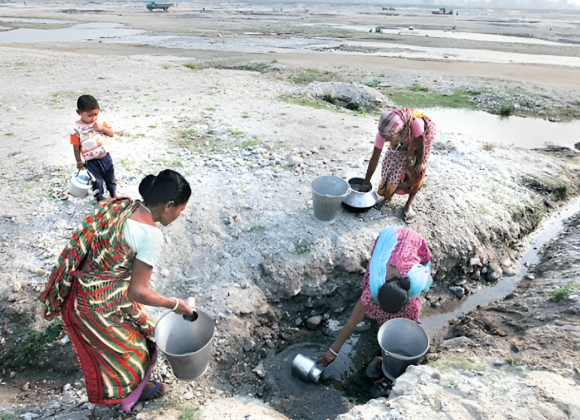E-commerce, short for electronic commerce, refers to the buying and selling of goods and services through the internet. While the global roots of e-commerce date back to 1979, when Michael Aldrich pioneered online shopping by linking a television set to a transaction-processing computer via a telephone line, each country has experienced its own digital evolution — and India is no exception.
In India, K. Vaitheeswaran is widely regarded as the pioneer of Indian e-commerce. In 1999, he co-founded Fabmart.com, which later evolved into Indiaplaza — one of India’s first online retail platforms. At a time when internet usage in India was still limited, his vision laid the groundwork for a booming digital economy.
Fast forward to today, the Indian e-commerce market is one of the fastest-growing in the world. With increasing internet penetration, affordable smartphones, and digital payment innovations like UPI, the sector is projected to reach USD 350 billion by 2030. Giants like Flipkart, Amazon India, Myntra, and Reliance JioMart have become household names, while thousands of D2C (Direct-to-Consumer) brands are leveraging digital platforms to reach customers directly.
Traditional business models in India — once heavily dependent on physical retail stores, cash transactions, and local customer bases — are being reshaped by the reach, speed, and convenience of e-commerce. In this blog, we’ll explore how this digital revolution is transforming business operations, consumer behavior, and market dynamics in both India and beyond.
1. From Physical to Digital
Traditional businesses have always been tethered to a physical location — a store, an office, or a marketplace. Their customer base was largely determined by foot traffic, local advertising, and word-of-mouth within a limited geographic area. Expanding beyond borders required significant capital investment in infrastructure, manpower, and logistics.
Example: With the internet as the storefront, businesses are no longer bound by physical walls. A brand based in a small town can now sell products to customers across the country — or even globally — with just a few clicks. Online marketplaces like Amazon, Flipkart, Etsy, and Meesho, along with D2C websites, have made it easier than ever for sellers to reach new markets without opening physical outlets.
2. Personalization Powered by Data
In traditional retail, understanding customer preferences relied on intuition and limited face-to-face feedback, which lacked scale and accuracy. E-commerce, however, leverages every user interaction — from clicks to purchases — as valuable data. Using AI and ML, platforms analyze this behavior to deliver highly personalized experiences that far surpass traditional methods.
Example: Netflix recommends shows based on your watch history. Similarly, Amazon suggests products based on your searches, cart activity, and purchases — often leading users to buy things they didn’t even know they needed.
3. 24/7 Storefront and Customer Convenience
E-commerce eliminates time restrictions by offering a 24/7 shopping experience, unlike physical stores with fixed hours. Customers can shop anytime, from anywhere, making it highly convenient and perfectly suited to today’s on-the-go lifestyles.
Example: A working professional might add groceries to their cart during a break and complete the purchase at midnight — all without stepping out or waiting for a store to open.
This round-the-clock model not only improves customer experience but also allows businesses to maximize revenue without increasing overhead costs. It’s convenience redefined — both for the buyer and the seller.
4. Evolution in Supply Chain & Inventory Management
E-commerce has transformed traditional supply chains by replacing manual processes with real-time inventory tracking, automated restocking, and data-driven forecasting. This shift reduces errors, streamlines delivery, and ensures better coordination across suppliers, warehouses, and logistics partners.
Example: Companies like Amazon use robotics and predictive analytics to manage massive inventories and deliver millions of orders efficiently and quickly.
By shifting from reactive to proactive management, e-commerce businesses not only reduce operational costs but also improve delivery speed and customer satisfaction.
5. Enhanced Customer Engagement & Feedback Loop
E-commerce enables continuous, two-way communication, unlike traditional retail where feedback was limited and delayed. With tools like reviews, ratings, and chat support, businesses can instantly gather insights, resolve issues, and strengthen customer relationships.
Example: A customer leaves a review mentioning a sizing issue. The brand responds promptly, offering a replacement and adjusting the product description — all visible to other shoppers, increasing transparency and trust.
E-commerce creates a dynamic feedback loop where businesses don’t just sell — they listen, learn, and evolve with their customers.
6. Digital Payment Ecosystem
One of the core enablers of e-commerce is the evolution of digital payments. Unlike traditional models that heavily relied on cash or card payments at physical counters, e-commerce platforms support a wide range of digital payment methods — from credit/debit cards to mobile wallets, UPI, net banking, and even Buy Now, Pay Later (BNPL) options.
These secure, fast, and user-friendly systems not only make transactions seamless but also increase trust among users, encouraging repeat purchases.
Example: In India, platforms like Paytm, Google Pay, and PhonePe have made online payments mainstream, especially after the digital push post-demonetization. Globally, services like PayPal, Apple Pay, and Stripe are redefining transaction experiences.
Final Thoughts
E-commerce has done more than just digitize the shopping experience — it has redefined the way businesses operate, connect with customers, and grow. From breaking geographical barriers and enabling 24/7 storefronts to offering data-driven personalization, streamlined supply chains, and dynamic customer engagement, e-commerce is continuously reshaping traditional business models.
As technology evolves and consumer expectations rise, businesses that embrace this digital shift will stay ahead of the curve — while those that resist may struggle to keep pace. In today’s fast-moving world, adaptability isn’t just an option; it’s a necessity.
Whether you’re a consumer enjoying the convenience of online shopping or a business looking to scale in the digital age, one thing is clear: e-commerce is not just the future — it’s the now.




